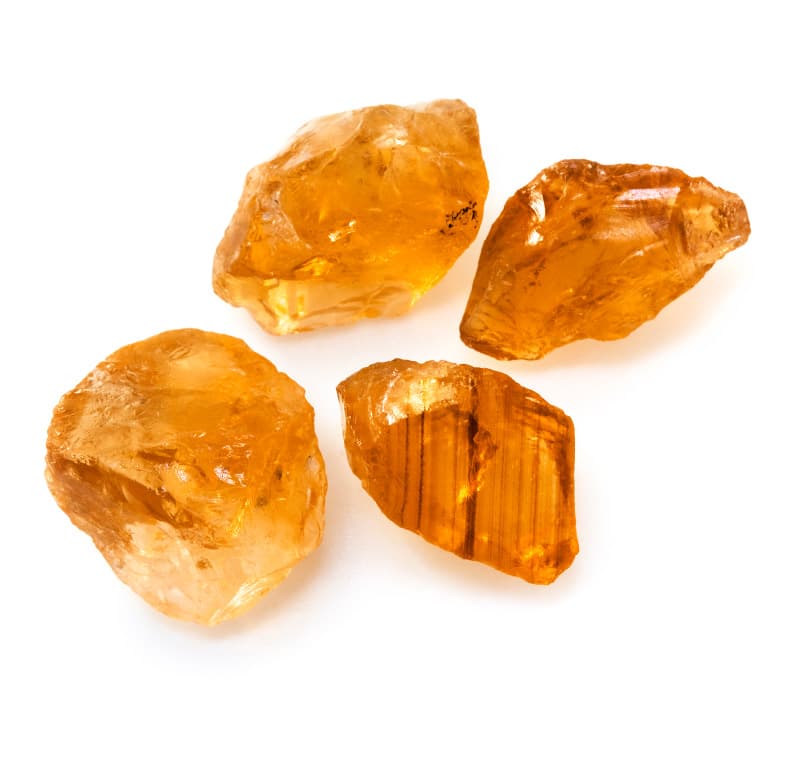
The name citrine refers to a yellow variety of quartz that is often used in jewellery as a decorative gemstone. The name of the mineral comes from its yellow coloration, because citrus is the Latin term for lemon, and thus clearly indicates the color quality of the gemstone. Citrine belongs to the mineral class of quartz crystals and shines with a greasy or glassy luster. The transparency is transparent to translucent, whereby in combination with a special cut on the surface an attractive sparkle becomes possible and makes this mineral an interesting component for different jewellery. The variety of colours of citrine ranges from pastel yellow, to sunny yellow, to mandarin orange and Madeira red. The reason for the colour lies in the composition of the citrine, because they contain iron oxide or iron hydroxide, which can be responsible for the colour. A commonly used but incorrect name for citrine is topaz. A topaz, unlike a citrine, is an island silicate. In ancient times, the citrine was considered a gemstone of good luck and was supposed to keep out evil thoughts as well as protect against snakebites and other poisonous reptiles. The most popular citrines come from Brazil, Madagascar, Uruguay and Mozambique. In esotericism, the stone is believed to have various positive effects. It is supposed to stimulate mental abilities and promote self-confidence.